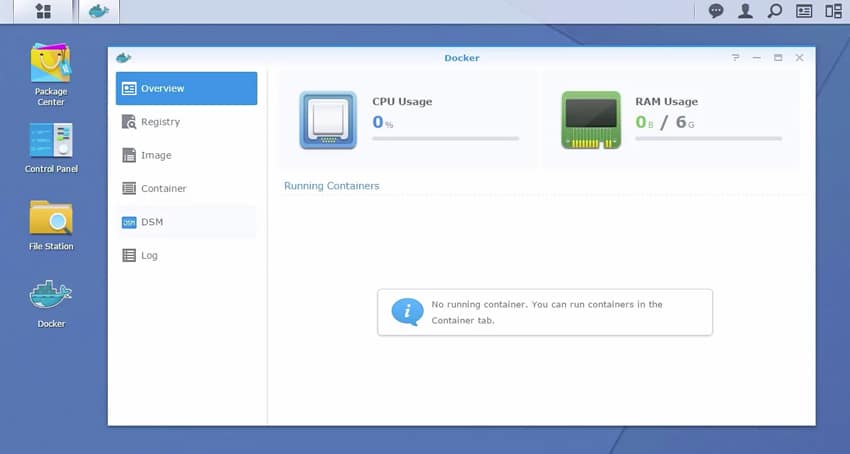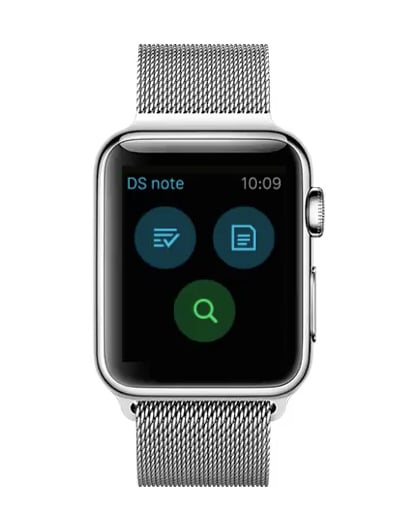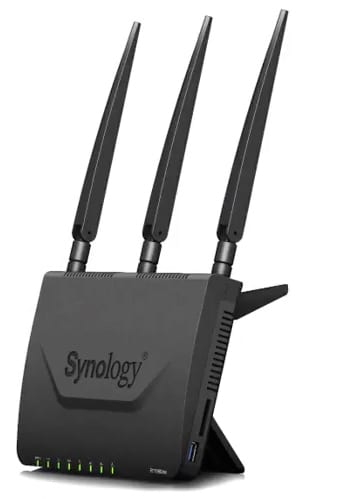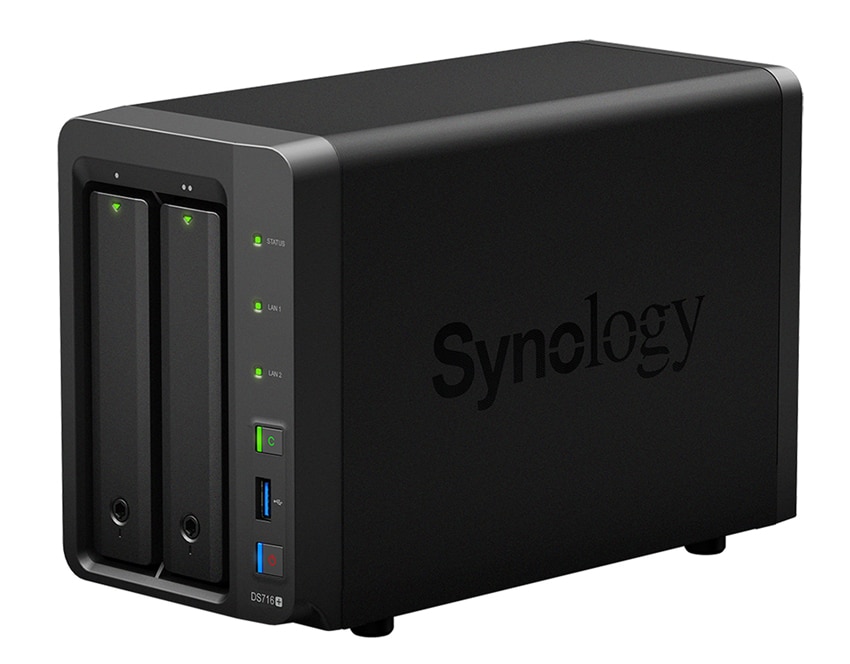
Today Synology America Corp. announced that it will be making several changes in the coming year. The demands of both personal and professional technology are only going up and Synology is making changes to meet these demands. These changes include a new OS, DiskStation Manager (DSM) 6.0, new advanced NAS products, apps for wearable devices such as the Apple Watch, and Synology’s first router, the Synology RT1900ac.
When people think of Synology usually two things come to mind: Synology’s award winning and easy-to-use operating system, DSM; and their NAS line that features everything from a single bay NAS up to a NAS with over 1PB of raw storage capacity. Synology wants to keep this impression while adding new features for business such as virtualization, data protection, disaster recovery, and productivity apps and improving options for home users with better streaming for Video Station, and their first router, the RT1900ac.
The first major change Synology will be implementing will be a new version of its OS, DSM currently in version 5.2. All of Synology’s NAS products use DSM from the smallest home DiskStation to the largest enterprise RackStation. In theory, using the same OS across the board makes sense in the regard that if a user has the OS at home for their Multimedia collection, for example, they will be familiar with the system when using it at work. Also when an update is released there is no need to focus on one aspect or the other. The new DSM will have new features for both Business and Home use.
For Business use DSM 6.0 is all about storing more data, processing the data faster, better backups and recovery, all while cutting costs and improving productivity.
New highlights include:
- Rolled up OS architecture: will support expanded 64-bit computing in more components of DSM 6.0. For components that will utilize 64-bit computing, over 4GB of memory can be used – which can increase concurrent users from 1,000 to more than 10,000; while adding performance advantages.
- Modularization of previously built-in applications: also delivers higher system reliability and flexibility when adopting updates.
- Petabyte-level shared folder: the Synology PetaSpace technology allows users to create a shared folder with petabyte capacity on multiple volumes, serving as the ideal solution to manage and archive cold data.
- Enhanced security: For each DSM update, Synology will implement the Qualys Vulnerability Management solution, ensuring all potential issues are rectified before DSM changes are made available to the public.
- Accessibility features: striving to provide a smooth, intuitive experience to all users, Synology will be the first to offer support for NVDA (NonVisual Desktop Access). The screen reader will help visually impaired people have more access to private clouds.
Along with the above, Synology is also releasing a Docker DSM and a Virtual DSM. The Docker DSM will enable multiple instances of DSM to be run on a single NAS. This will create better overall system reliability as each container runs independently and can only use the resources allocated to it. Virtual DSM creates a highly efficient virtual storage that allows DSM services to migrate to another host without downtime.
Synology is expanding its disaster recovery abilities with a Cloud Station suite that separates functions for bi-directional and standard synchronization. The latest Cloud Station will have wizards to help setup DR and will help companies with ROBO share and collaborate information. The latest Cloud Station comes with the following benefits:
- The Snapshot and Replication technology that comes with the advanced Btrfs file system reduces the impact of massive reading / writing on hard drives and high bandwidth consumption caused by traditional backup. Snapshots can be taken as frequent as every five minutes. Failover is performed through one-click migration, so businesses can easily achieve uninterrupted data protection and immediate disaster recovery.
- All-around disaster recovery solution through a hybrid cloud: being able to sync with public clouds, the Cloud Sync package adds support for several business-grade cloud services. Not only can users now set up multiple syncing tasks within a single account, but they can also upload the same sets of files to multiple public clouds. In the case of a catastrophic event, a company can recover its data from the cloud.
- Cloud Station offers cross-platform, cross-device data syncing tools. Synology developed an Intelliversioning algorithm that determines if a file version is important based on: if changes were saved, how frequently saving occurred, and when. The proprietary filter only keeps the most important historical versions of each file. The block-level and cross-version deduplication, exclusive to Synology’s backup feature, will provide the most effective and efficient recovery points. Also, the newly released Cloud Station Backup package introduces easy backups for personal computers.
Synology is also adding new apps aimed giving companies more control of their data in the cloud. These new apps include:
- The newly designed MailPlus service will allow businesses to enjoy the benefits of cross-platform support and comprehensive management features, while managing their data privacy. Furthermore, MailPlus Server will provide an active-active high-available framework that can guarantee uninterrupted service and maintain high productivity for enterprise users.
- SpreadSheet will offer comprehensive collaboration, tag, and privilege management features. Accidentally deleting data is a common problem that Synology has solved in Spreadsheets. The new app will keep unlimited historical versions, so users can easily restore previous versions, themselves.
- The Presentation feature has evolved and is able to convert raw data into easy-to-understand charts. A new Chrome extension will make offline editing possible, freeing users from the limitations of their devices and the Internet when working on the go.
- File Station will index approximately 700 common file formats, including the metadata of multimedia files. A quick search will identify the exact document, music, video, or photo users need immediately.
For home use, Synology hasn’t quite released as many updates and improvements as they did for the business side however they are the first NAS company to support Apple Watch integration. Users that have an Apple Watch will be able to use DS notes and DS audio, enabling them to take quick notes and enjoy their favorite music or podcasts. Synology has also revamped its popular VideoStation. The app is completely redesigned becoming even more intuitive and easier to navigate. The improvements aren’t limited to cosmetics: there is now support for offline transcoding and users can switch between devices and platforms as they view their libraries.
Along with the above mentioned software updates, Synology will also be releasing new hardware for both home and office. For home users Synology is releasing its router, the RT1900ac. This marks Synology’s first entry into networking. It seems like an odd choice to introduce a router when the market is already awash with them, but Synology’s router offers a few things to help it stand out, especially when it is being used with other Synology devices. The router features the “most desktop-like interface” in the industry (Synology Router Manager (SRM)), an easy 3-step setup process for both mobile devices and PCs, and options that allow users to control traffic, applications, and bandwidth. The RT1900ac also includes performance up to 1,900Mb/s combined transfer speeds, application-based traffic control, DNS-based, customizable web filters, support for exclusive Synology products (such as VPN Server, Radius Server, and Download Station), and the router can be connected to an external storage device to turn it into a personal cloud.
Synology’s new hardware for business is the DS716+ NAS Server. This new NAS Server is ideal for businesses that use graphic design such as advertising companies, videographers, and creative firms. The DS716+ NAS Server is able to transcode 4K video in real-time and also features power consumption reduced by up to 40%, high availability, up to 56TB of raw storage, and has increased its read/write performance by 160% over its predecessor for AES-256 bit encrypted data transfers.
Availability
The beta for DSM 6.0 is coming soon. The beta will be available on most DS and RS units, including the BeyondCloud units. The launch of DSM 6.0 along with the RT1900ac router, the new DS716+ server, and the new apps is expected in 2016. Synology will award the beta tester with the best feedback a new DS215j.
Sign up for the StorageReview newsletter




